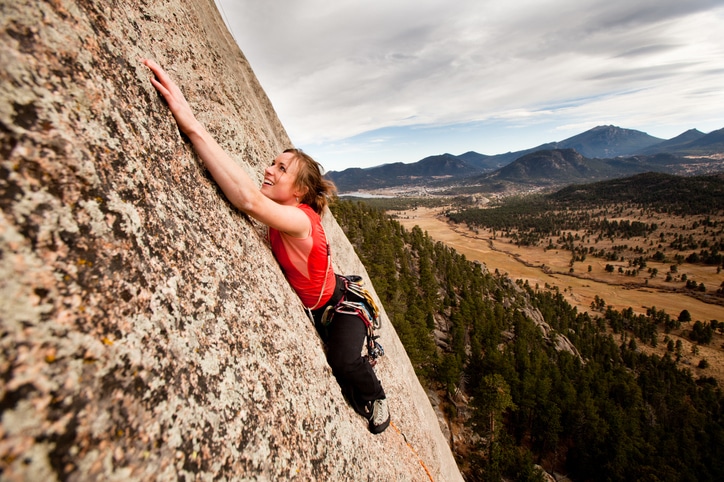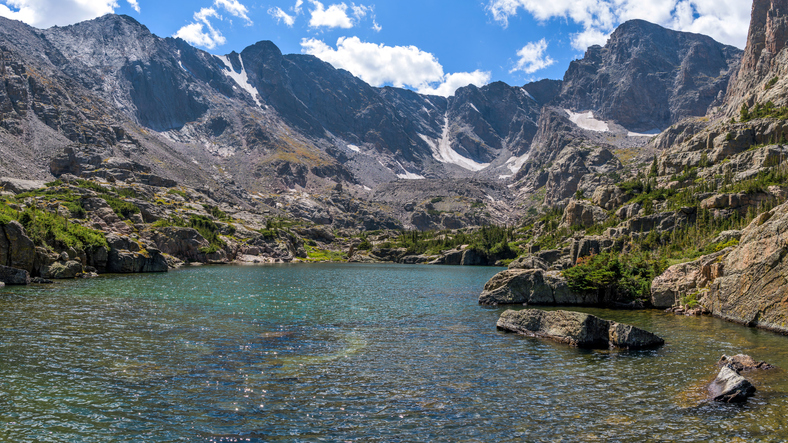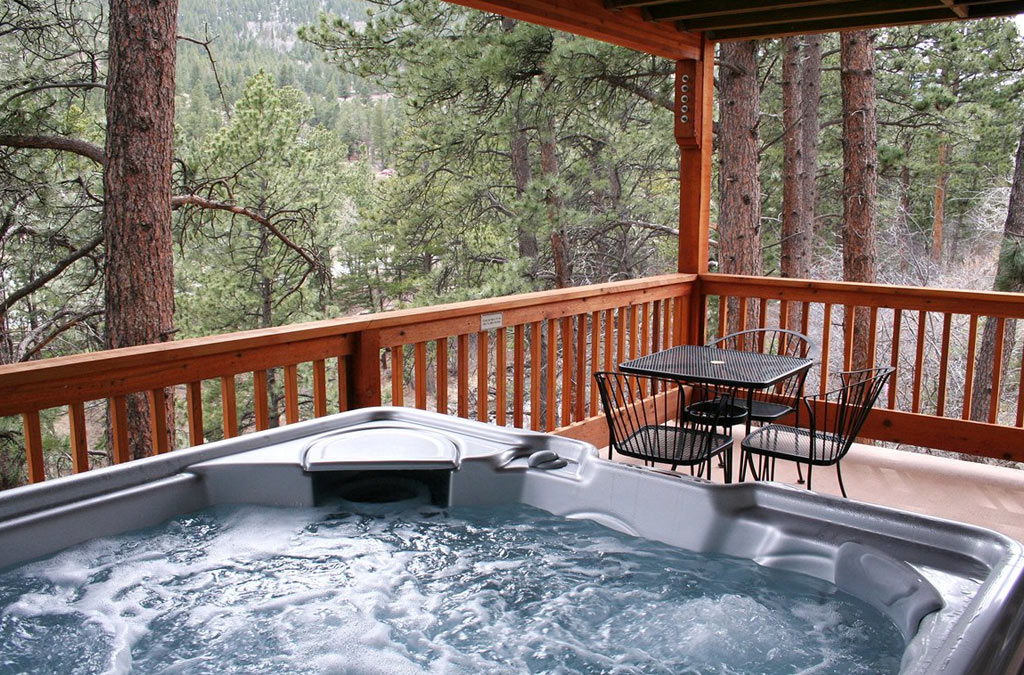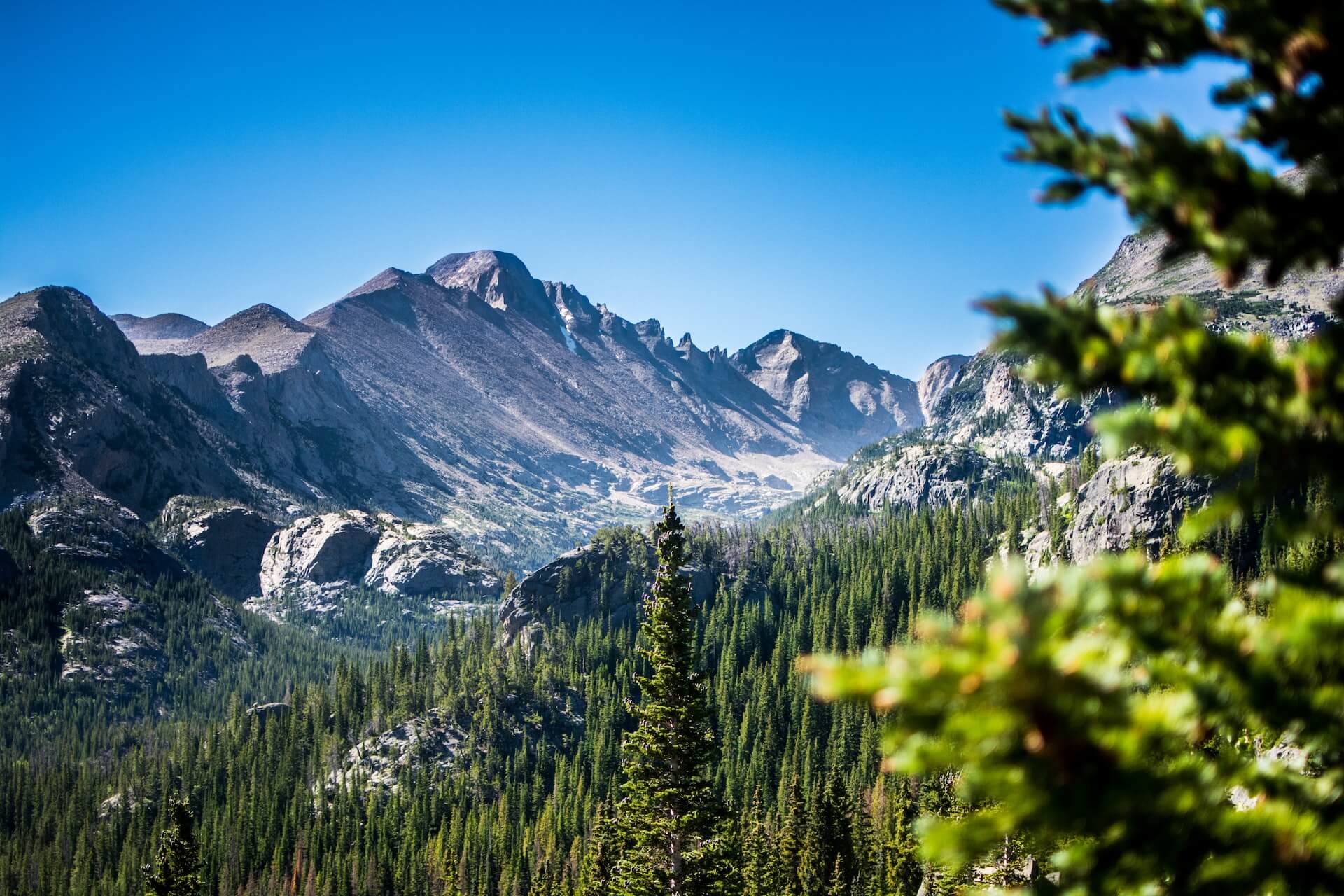Named as one of the “6 rock-climbing destinations worth planning a vacation around,” Estes Park has made a name for itself amongst the crag addicted rock-climbing community. It’s a sport that can be enjoyed by all, no matter the age and there are plenty of opportunities to help get you started if you are just beginning.
Regardless of your experience level, Estes Park has a lot to offer, from single-pitch beginner rock climbing to high-end multi-pitch routes.
Take your vacation to new heights by using our beginner’s guide to rock climbing in Estes Park.
Indoor vs. outdoor
While rock climbing is typically thought of as an outdoor sport, this activity can also be enjoyed indoors. Rock climbing in Estes Park offers many outdoor opportunities in areas such as Twin Owls, Estes Park Valley, and of course Rocky Mountain National Park. Indoor rock climbing can be enjoyed at the YMCA of the Rockies and the Estes Park Mountain Shop.
Basic terminology
Half of learning how to rock climb is learning the lingo. Climbers seem to speak a different language when maneuvering around the rock. Be a part of the conversation and use these top 10 climbing terms:
Belay – a system and rope technique that prevents a climber from falling.
Beta – terminology or tips about a route or problem.
Climber commands: on Belay? Belay’s on, Climbing, Climb on
Crag – a cliff face of the rock with multiple routes on it.
Crux – the most difficult part of a problem or route.
Jug – a larger, easy-to-grab hold.
Lead – the first roped partner up a rope.
Pitch – a section of rock that can be climbed in a single rope length.
Slack – what the climber says when they want the belayer to loosen up the rope.
Tension – what a climber says when they want less tension on the rope.
The gear
If you are just starting out, renting your gear is most likely your best bet. There are many outfitters in Estes Park that are equipped with rock climbing rental gear. Basic gear that is needed to begin includes a helmet, fancy footwear, harness, rope, chalk and chalk bag, plus hardware like a carabiner.
Understanding rock climbing ratings
Before you pick a route, be sure you understand the grading system used to identify levels of difficulty. Traditional and sport climbing in the U.S. use the Yosemite Decimal System. Beginning with Class 1, with technical climbing ratings starting at 5.0. Grades 5.10 and above are further broken down by letter designations. While ratings are subjective, here is a simple breakdown to help get you started:
5.0 – 5.4 – easy
5.5 – 5.8 – moderate
5.9 – 5.10 – more difficult
5.11 – 5.12 – technical climbing, challenging
5.13 – 5.15 – for professional climbers only
Colorado rocks
The state of Colorado is home to various types of rock, from basalt and conglomerate to granite and limestone. But what you will find most of when rock climbing in Estes Park and Rocky Mountain National Park is granite rock.
Types of rock climbing
There are several of the most common types of rock climbing:
Bouldering – using no ropes, every fall is a fall to the ground so an essential piece of equipment to use is a crash pad.
Sport climbing – climbers use two quick-draws to climb routes with pre-placed bolts.
Free solo – climbing without a rope
Traditional climbing – trad climbers use cams, shocks, and other hardware in cracks to protect themselves from falling.
Estes Park is known mostly for traditional, sport, and bouldering.
Classes
If you are just starting out, consider signing up for a guided climbing lesson. The Kent Mountain Adventure Center offers a wide variety of lessons from group to private. Take your adventure one step further and sign up for their overnight cliff camping experience.
Stay at Rocky Mountain Resorts

Complete your Estes Park adventures with a stay at one of our cabins, condos, or vacation homes at Rocky Mountain Resorts. Located in the heart of Estes Park and near Rocky Mountain National Park, your rock-climbing adventures in Estes Park aren’t far away!






